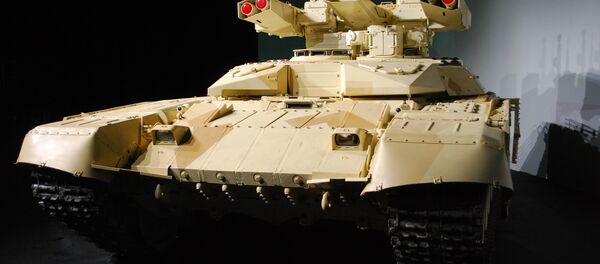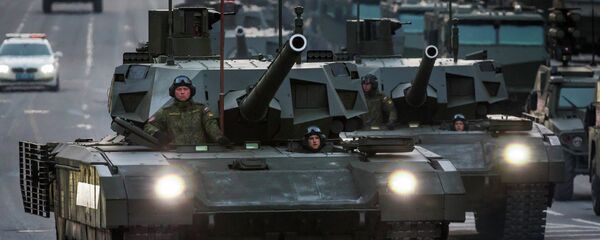Created by the Uralvagonzavod Research and Production Corporation, the T-15 is expected to replace the BMP-2 amphibious infantry fighting vehicle and the MT-LB multi-purpose fully amphibious armored vehicle based platforms of the Russian Ground Forces.
Speaking to Zvezda, Uralvagonzavod Deputy Director General Vyacheslav Khalitov stressed the role the T-15 will play in grappling with modern warfare.
"Modern warfare necessitates a rapid response. It is safe to say that Armata-class tanks, along with the T-15 and other state-of-the-art armored vehicles, help resolve…any military problem in a quick and efficient way," Khalitov said.
The T-15 has a number of advanced features, and like the T-14, it is protected by reactive armor and the Afghanit active protection complex.

This system is equipped with Doppler radar to detect incoming projectiles, including rocket-propelled grenades and anti-tank missiles. Once detected, the active defense system launches an interceptor rocket that destroys the incoming projectile.
Importantly, the T-15's armor is made of a newly developed armor made from steel, ceramic and composite materials. This enables the T-15 to be deployed on a battlefield alongside Armata tanks, not behind them, thus making it possible to deliver infantry landing units right in the middle of the fight. In contrast, Soviet and older Russian-made armed personal carriers had light armor and were supposed to keep a secure distance from the firing line.
Also like the T-14, the T-15 is based on the Armata chassis, but unlike the T-14, it has its engine in the front.
Khalitov remains upbeat about the future of the T-15, which he said can be modernized and adapted into a completely new armored vehicle HQ, which will enable the command to safely stay on the battlefield without fearing for their lives.




